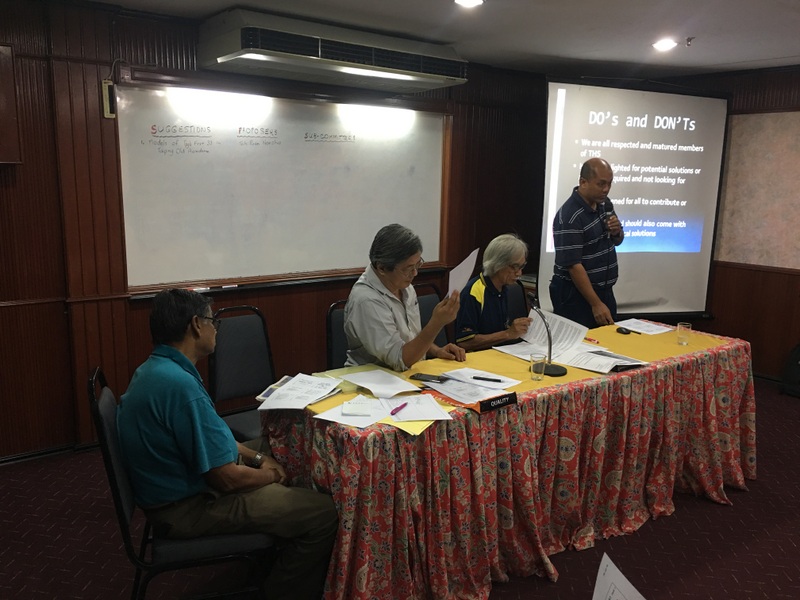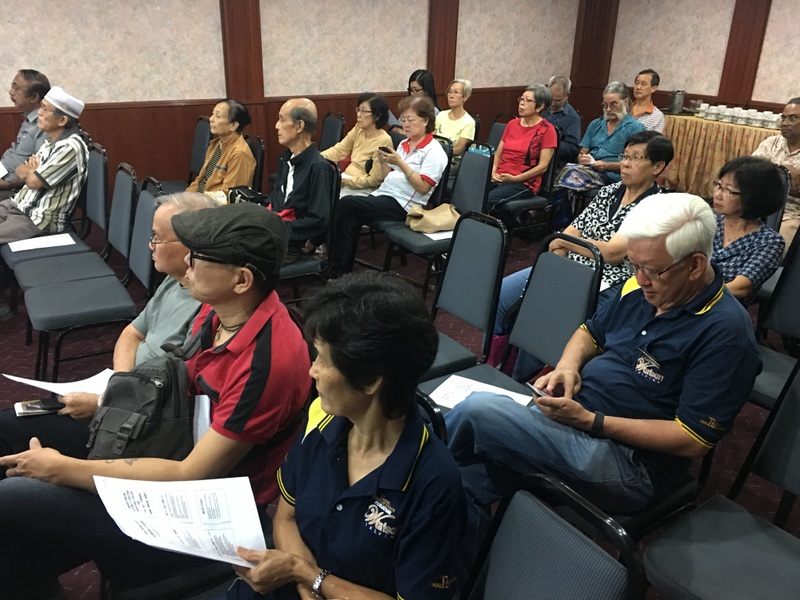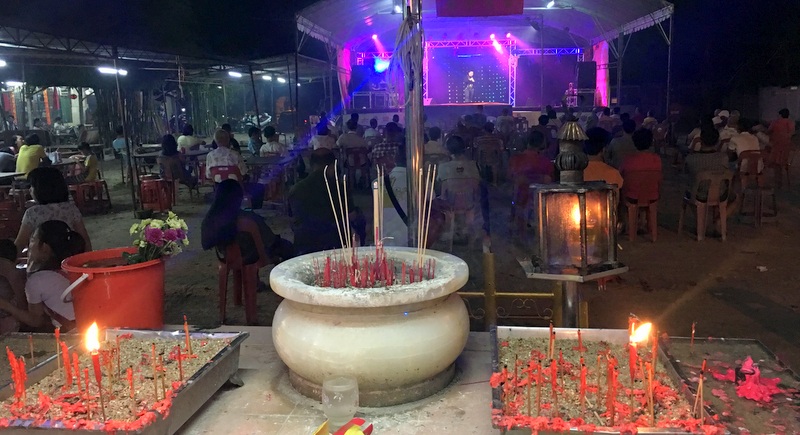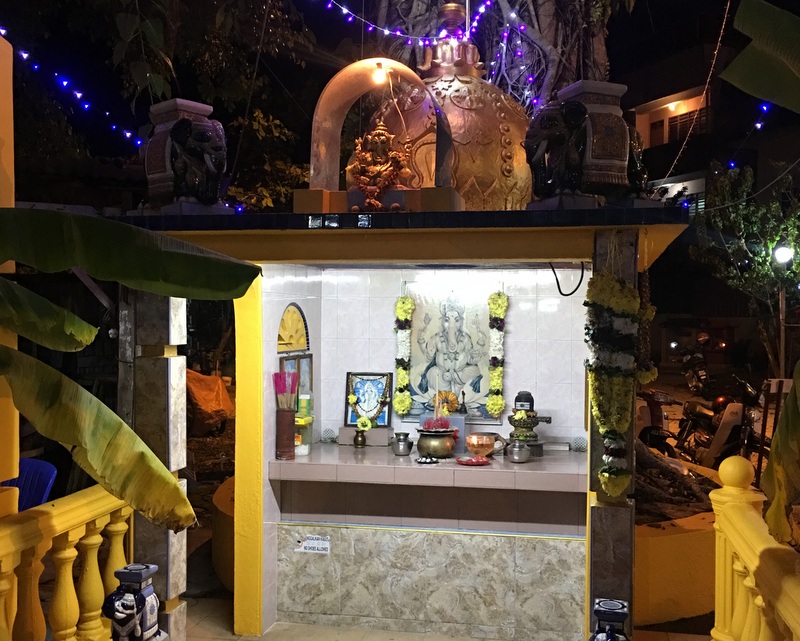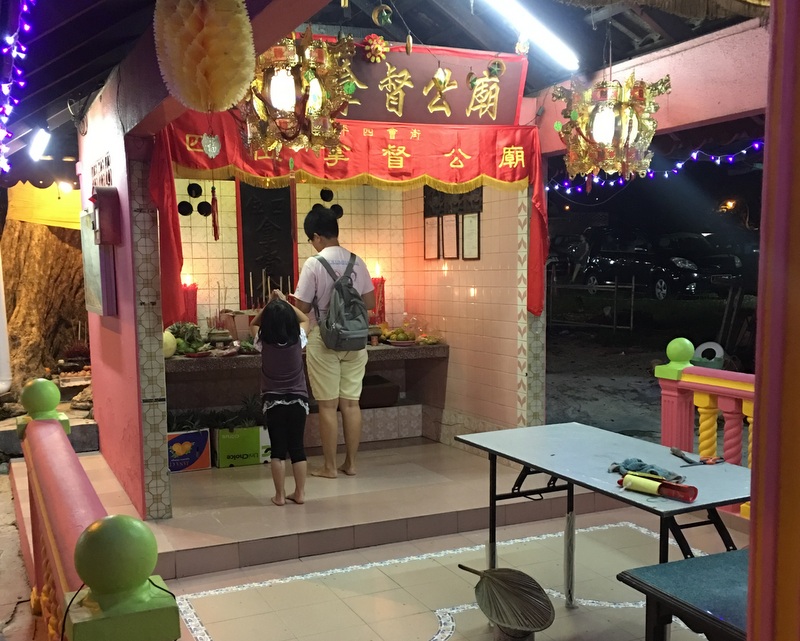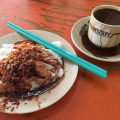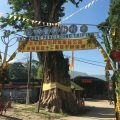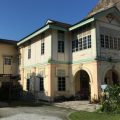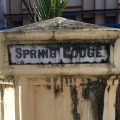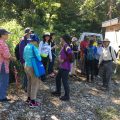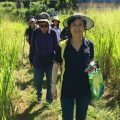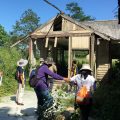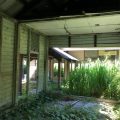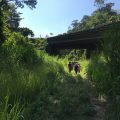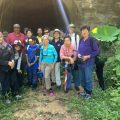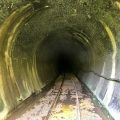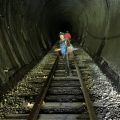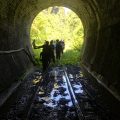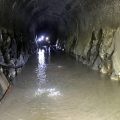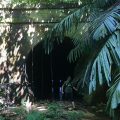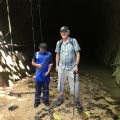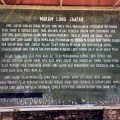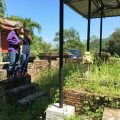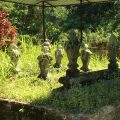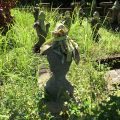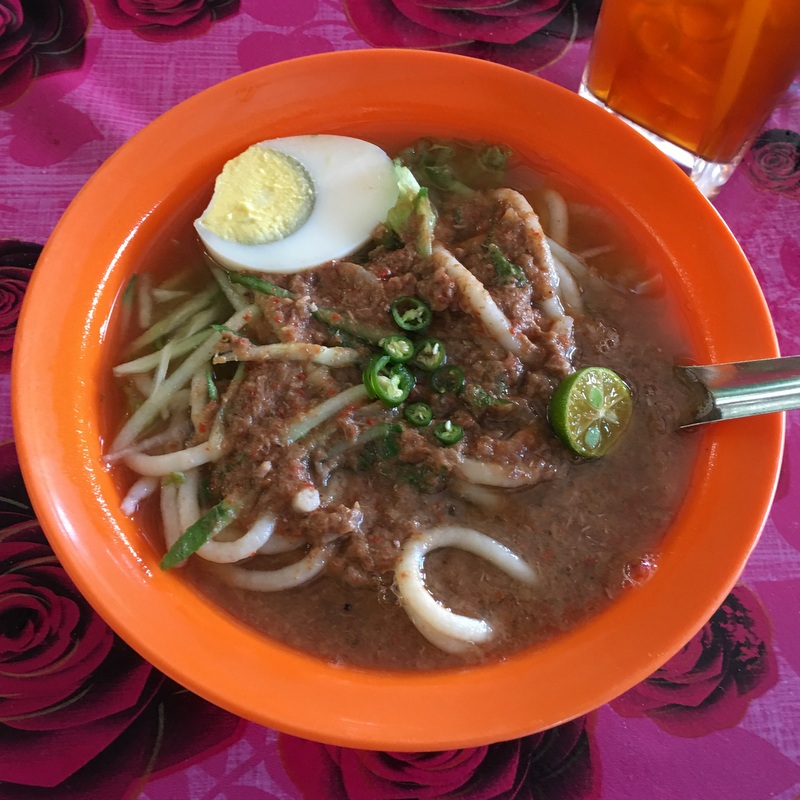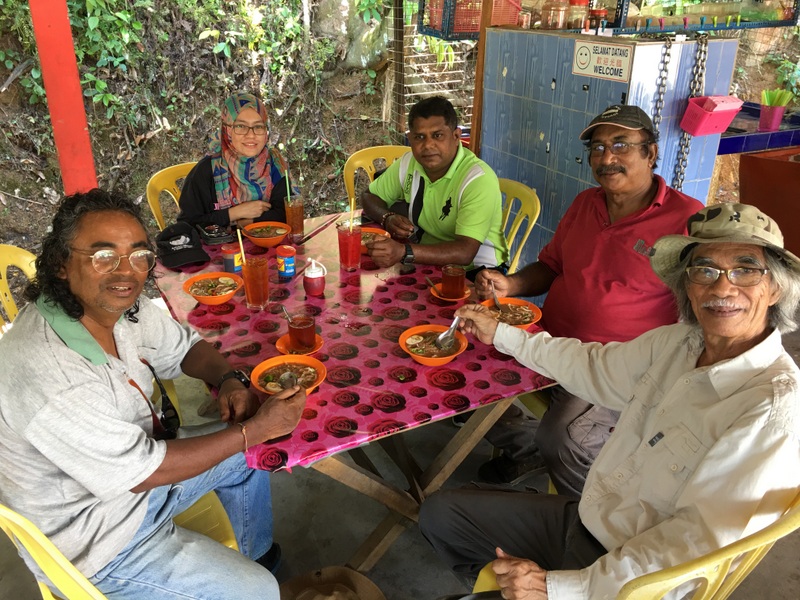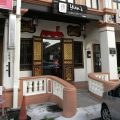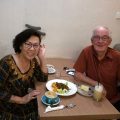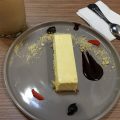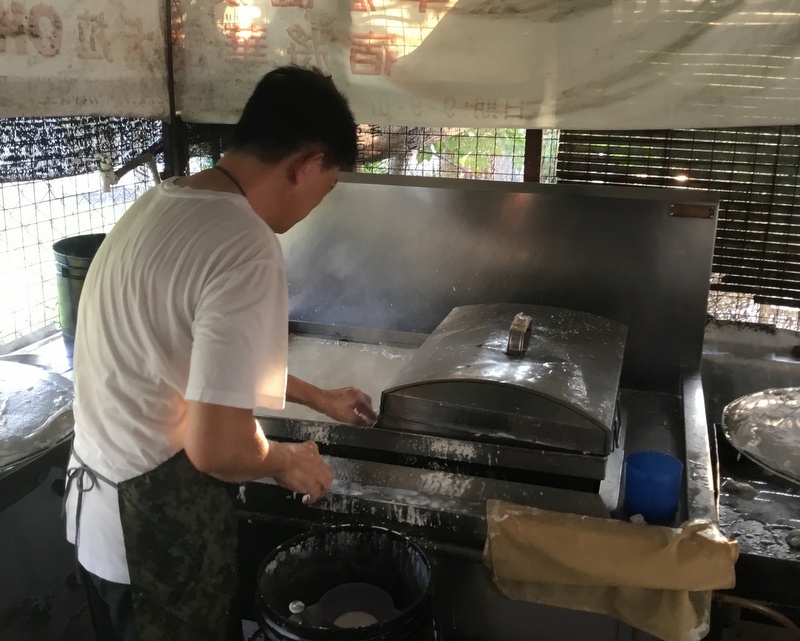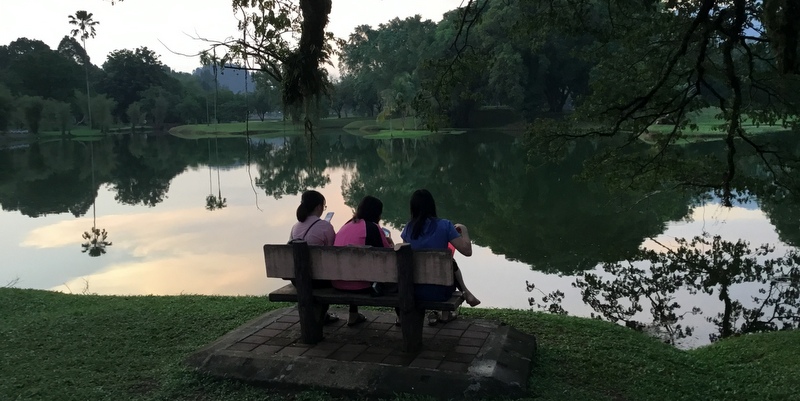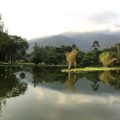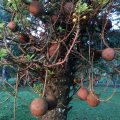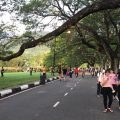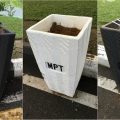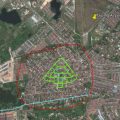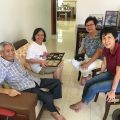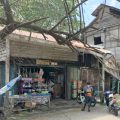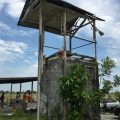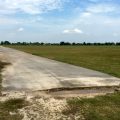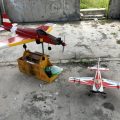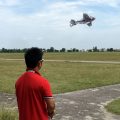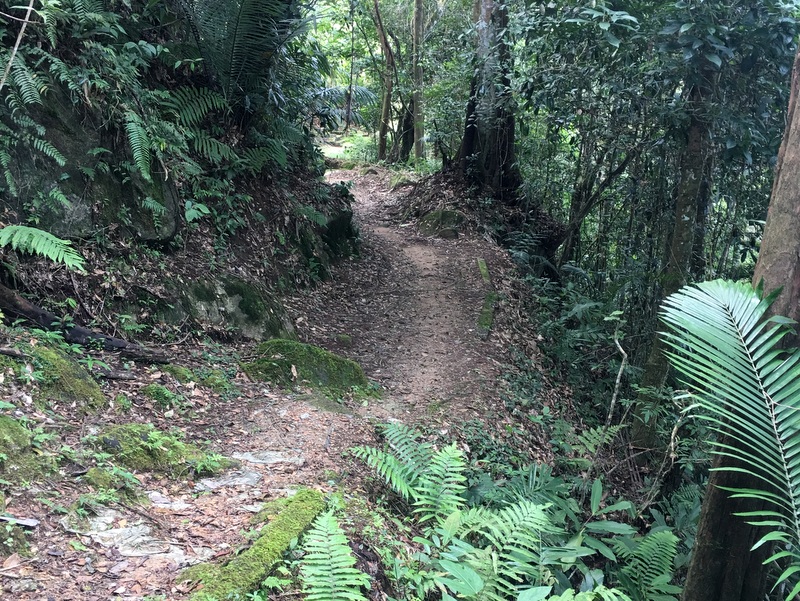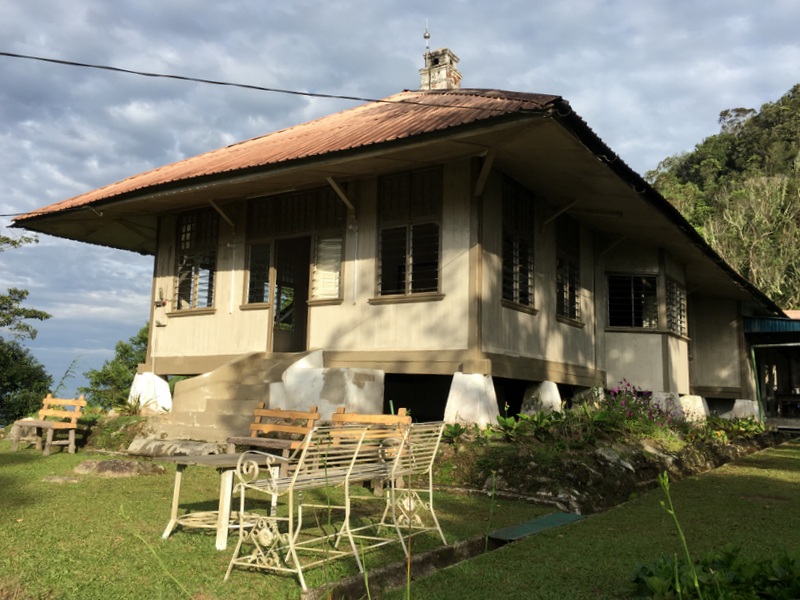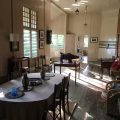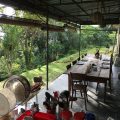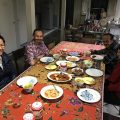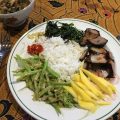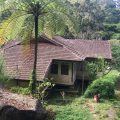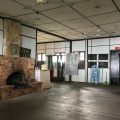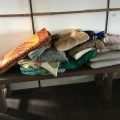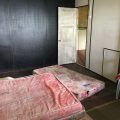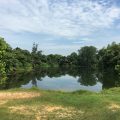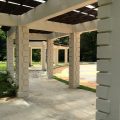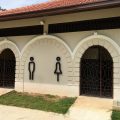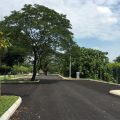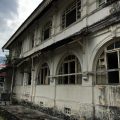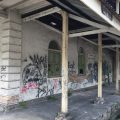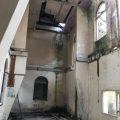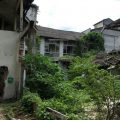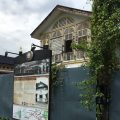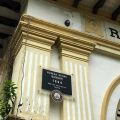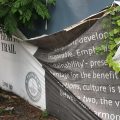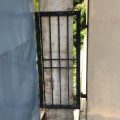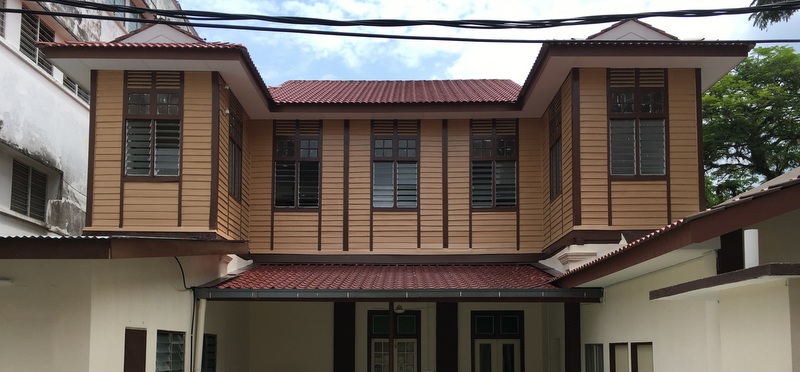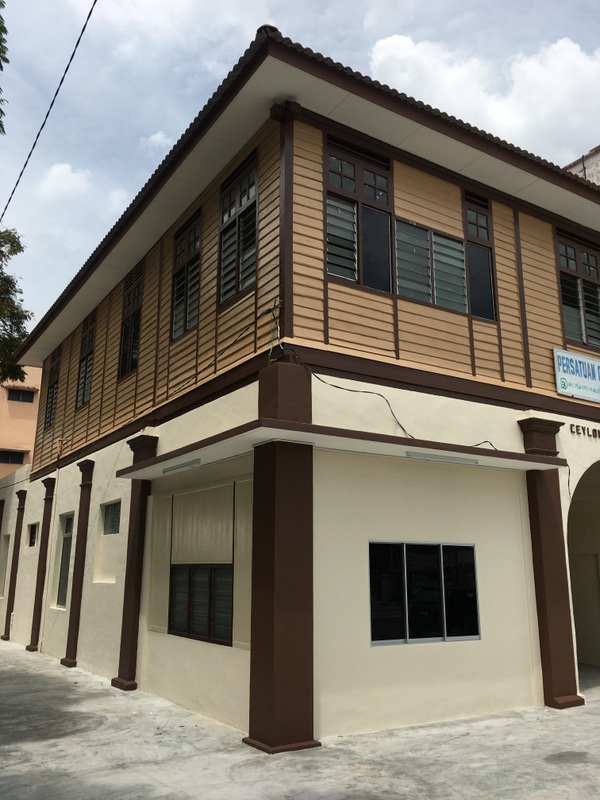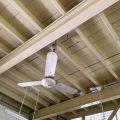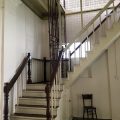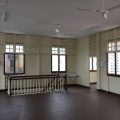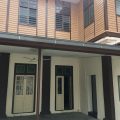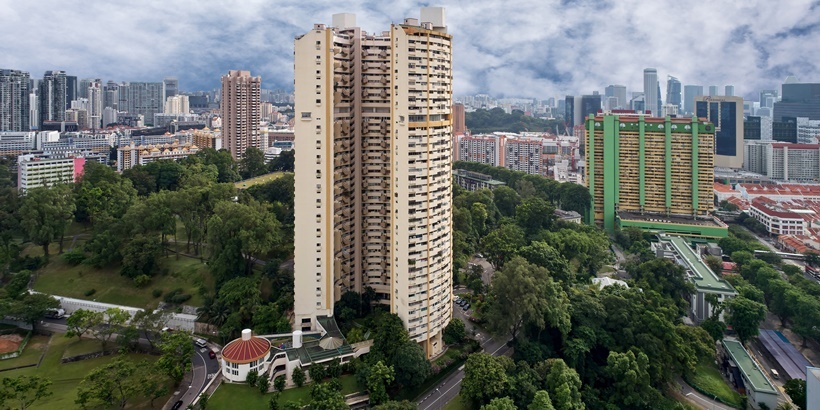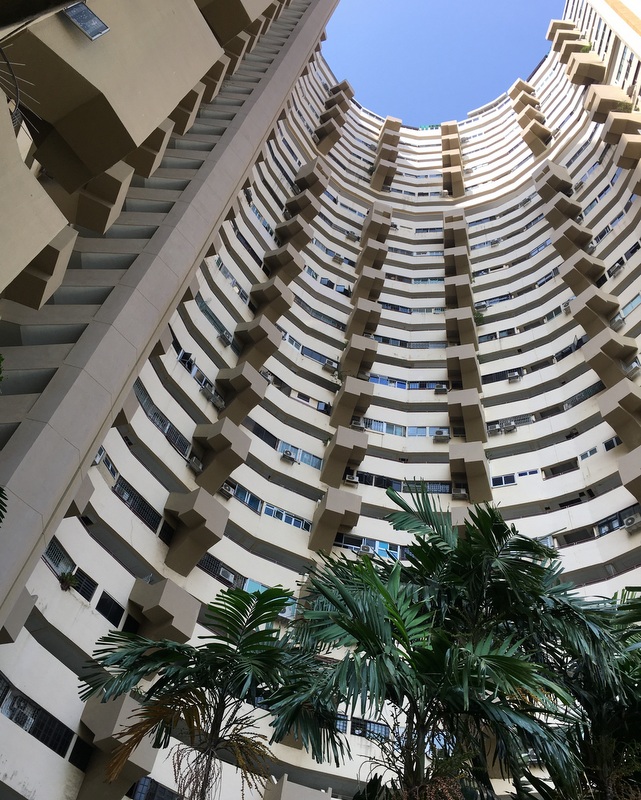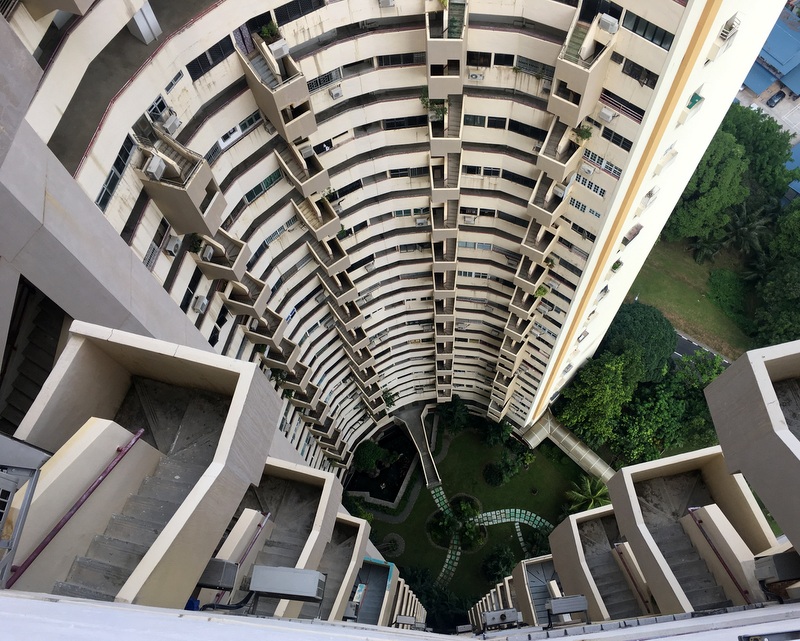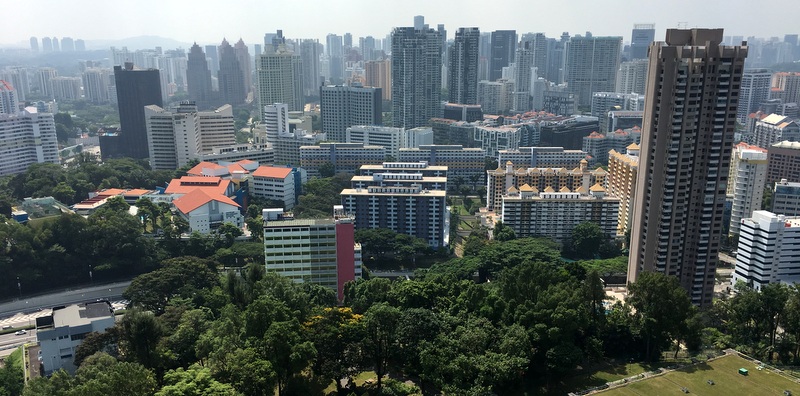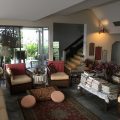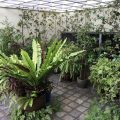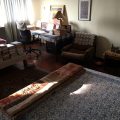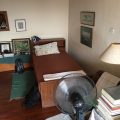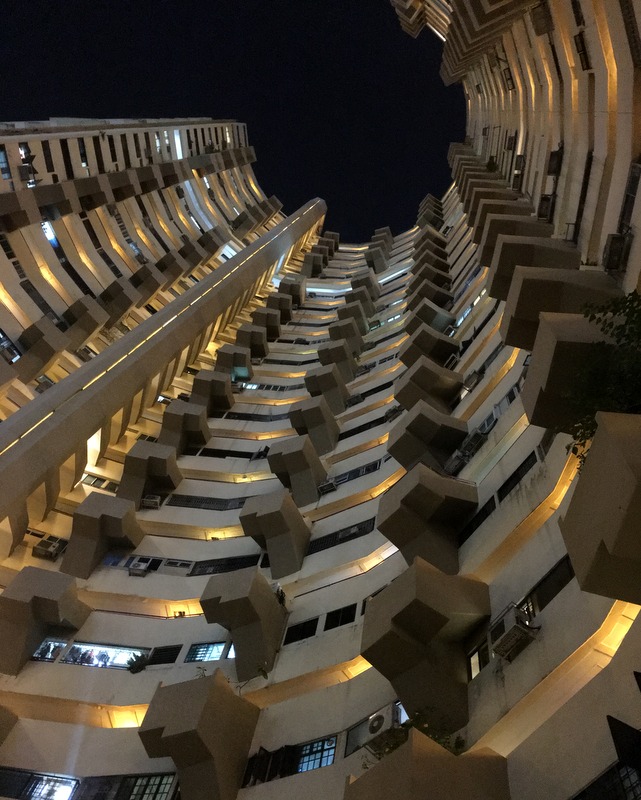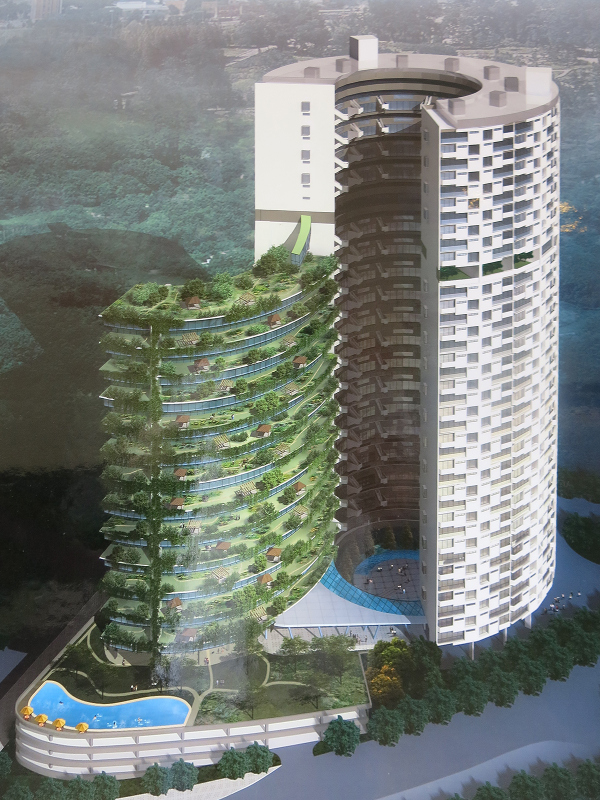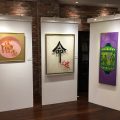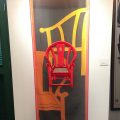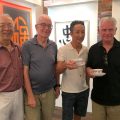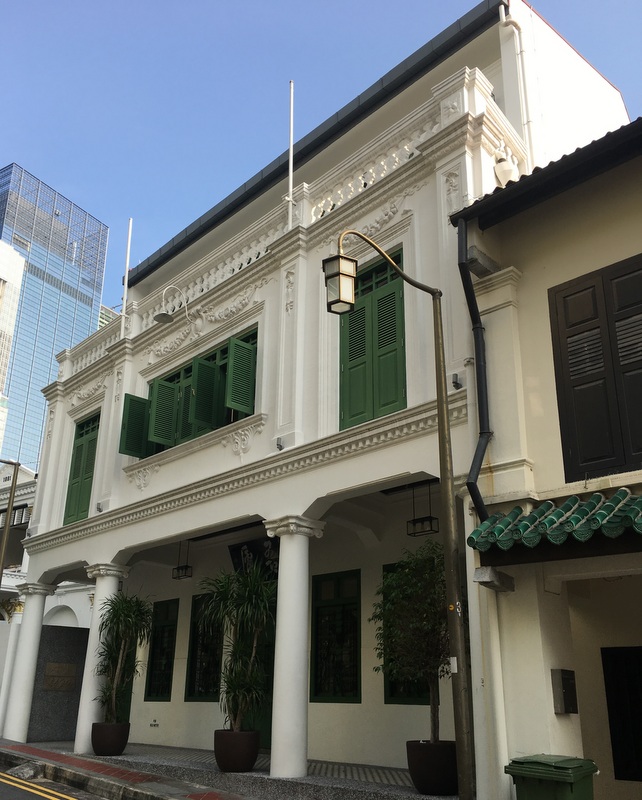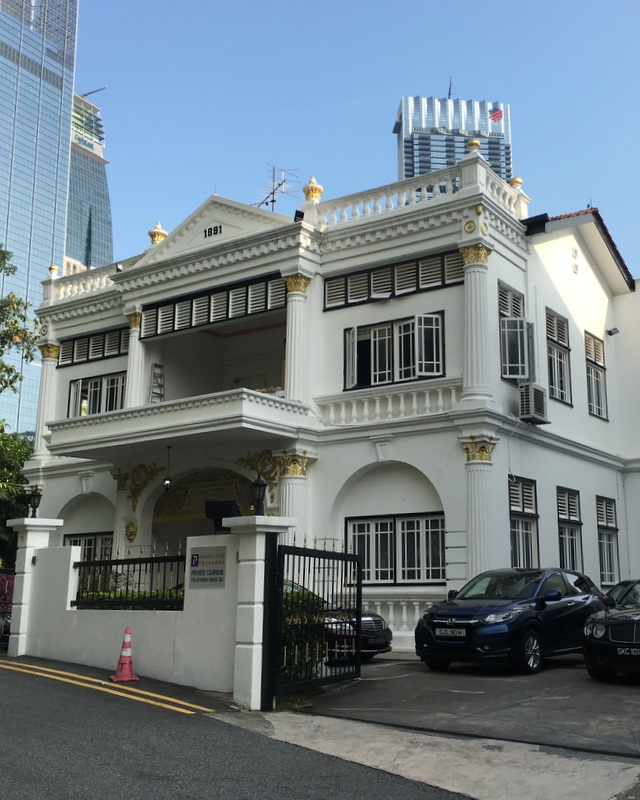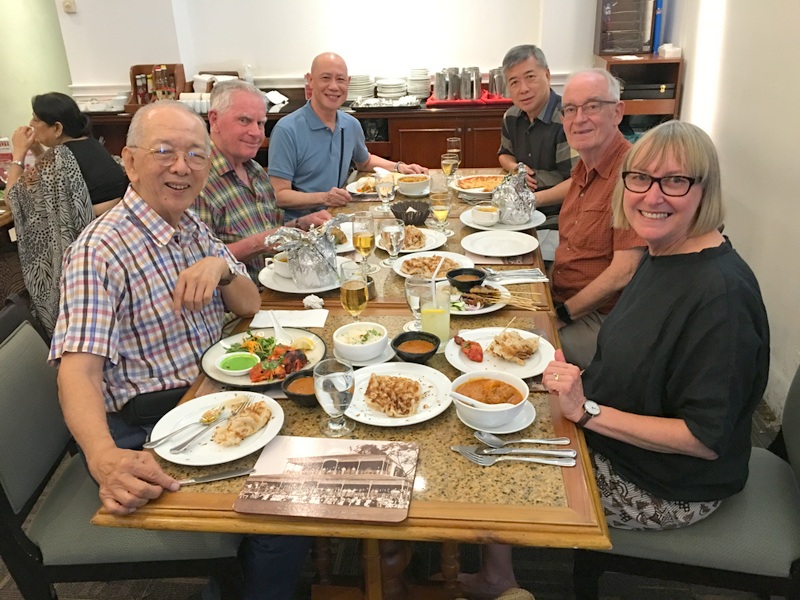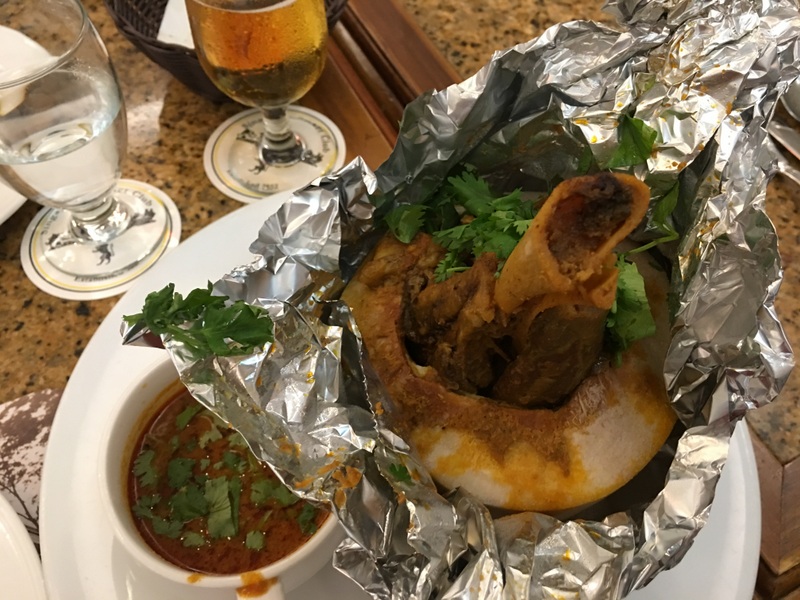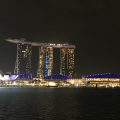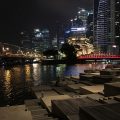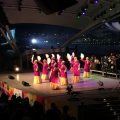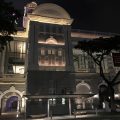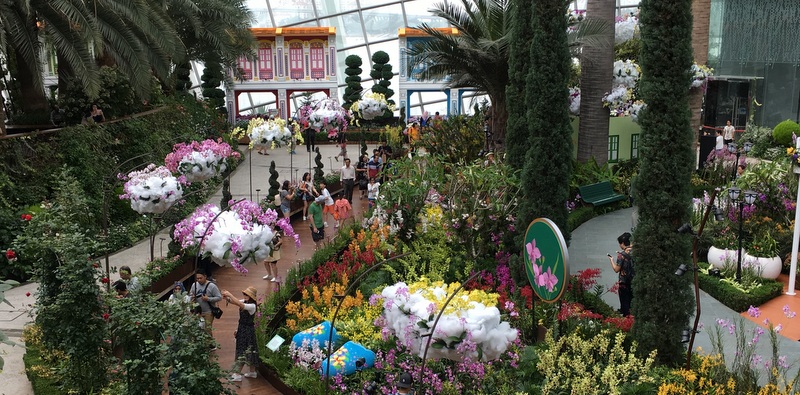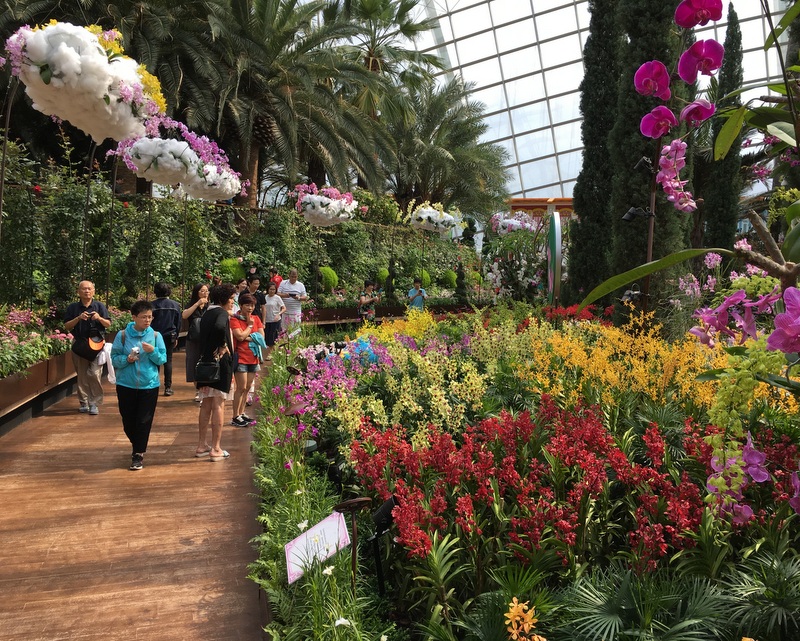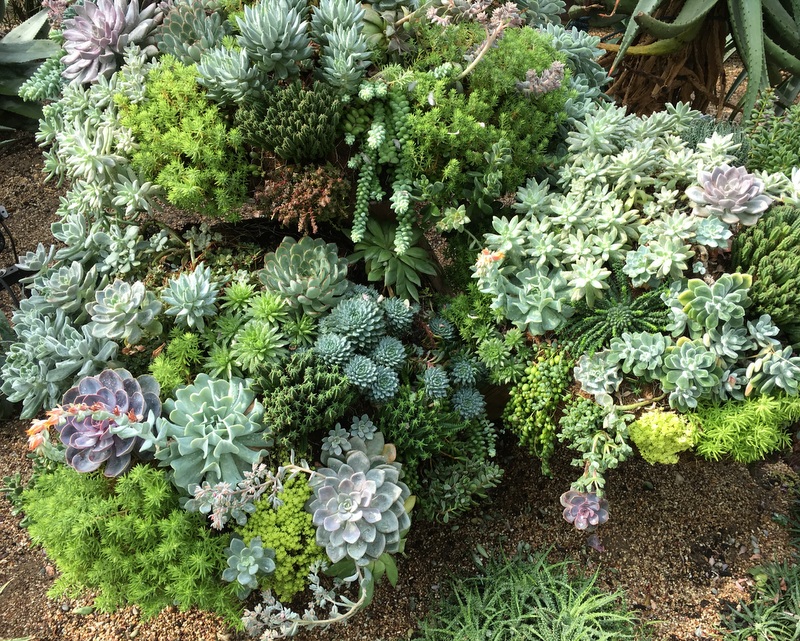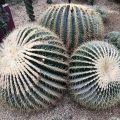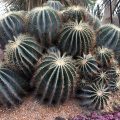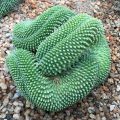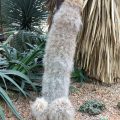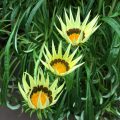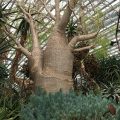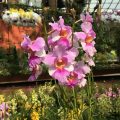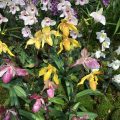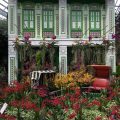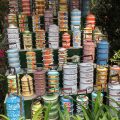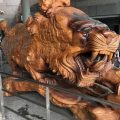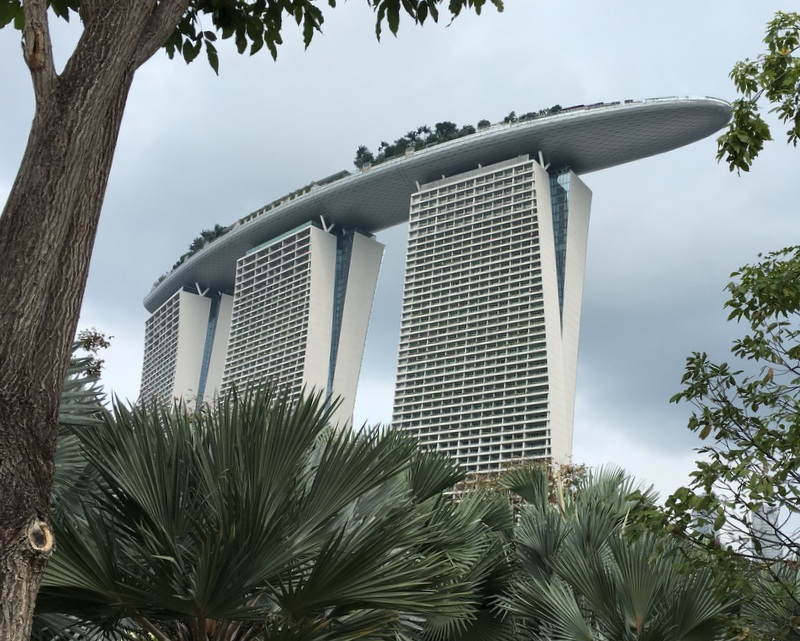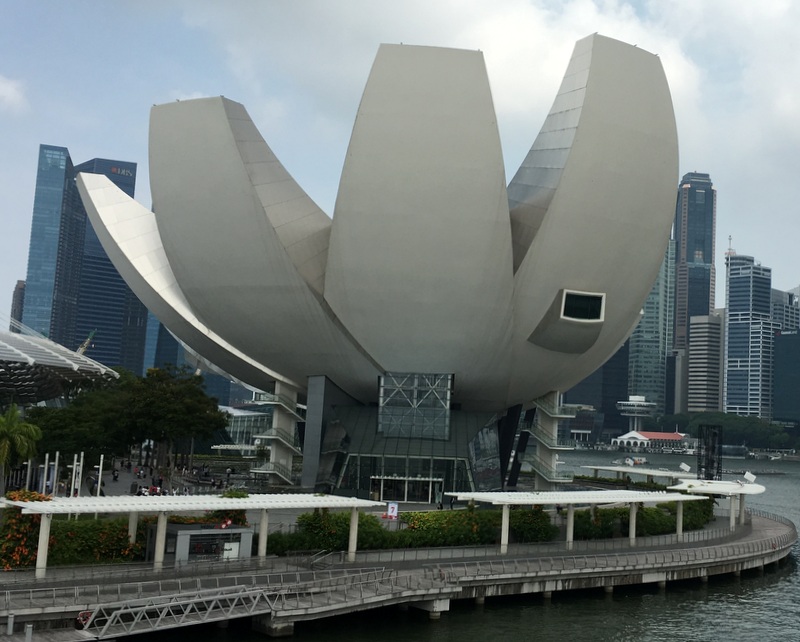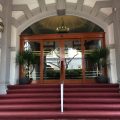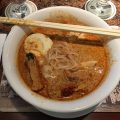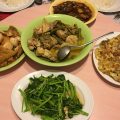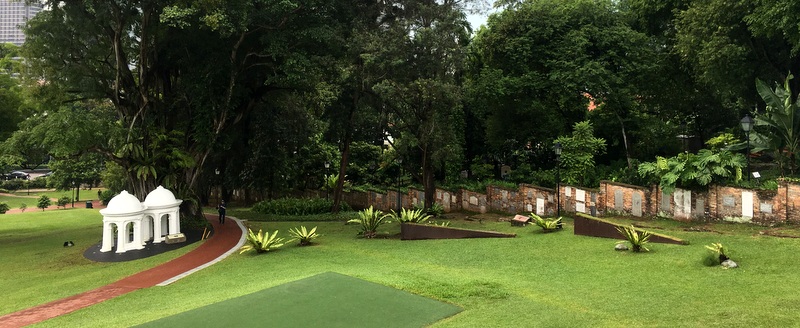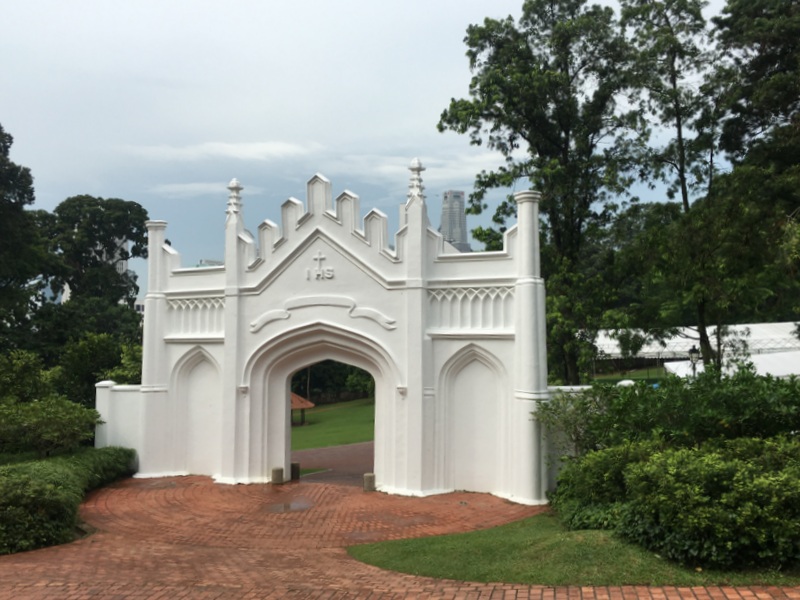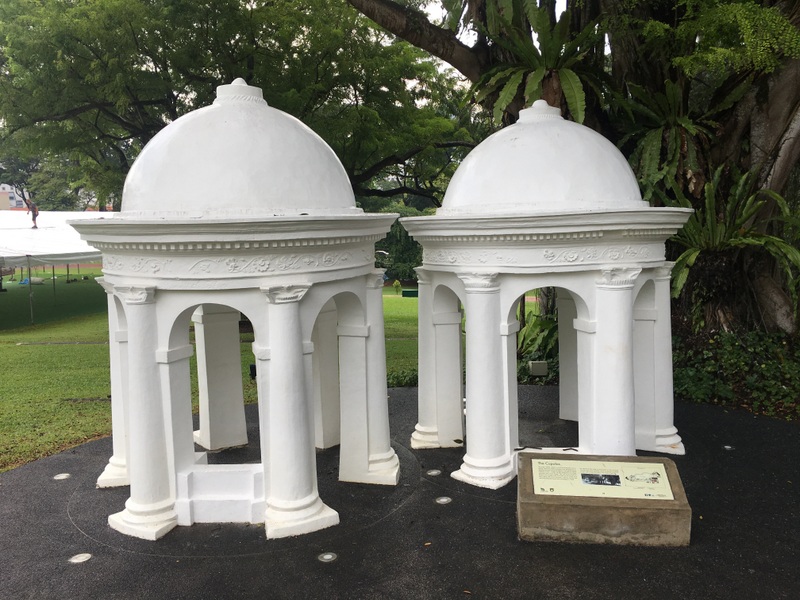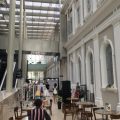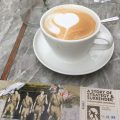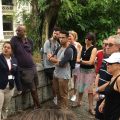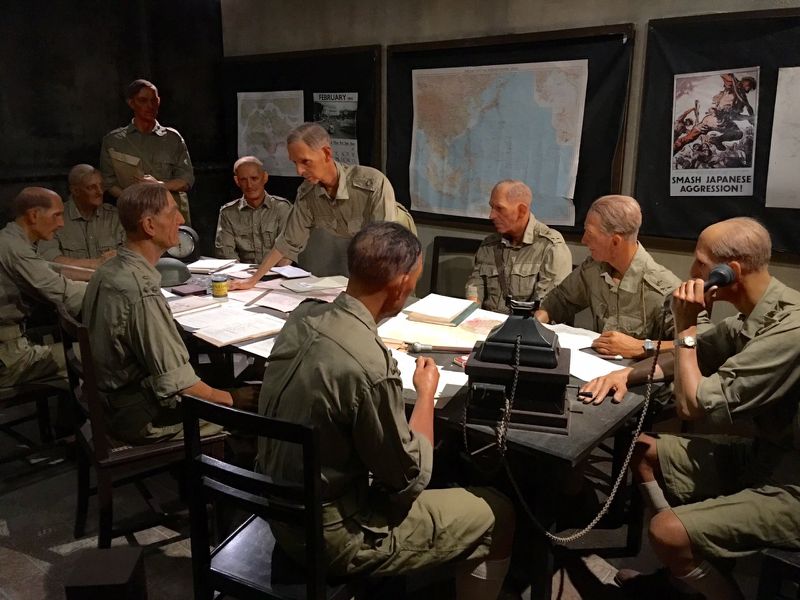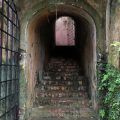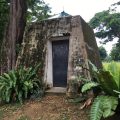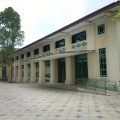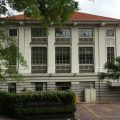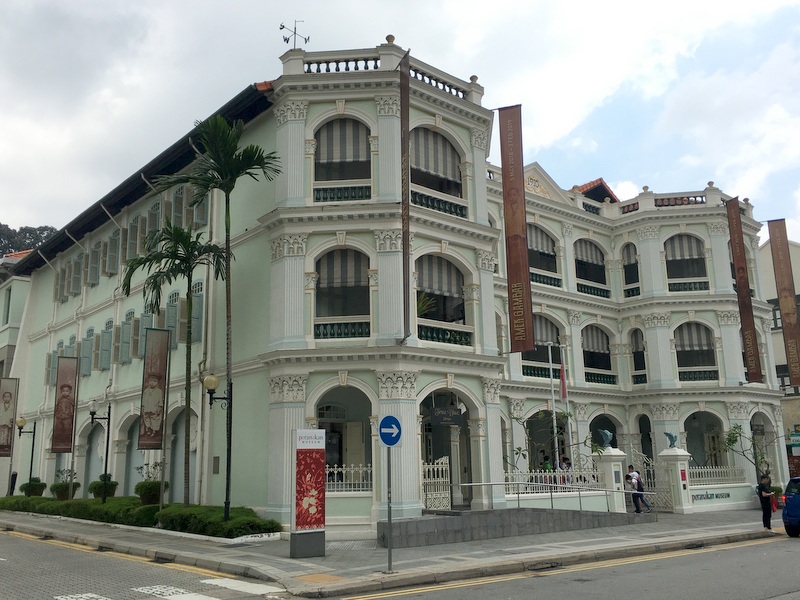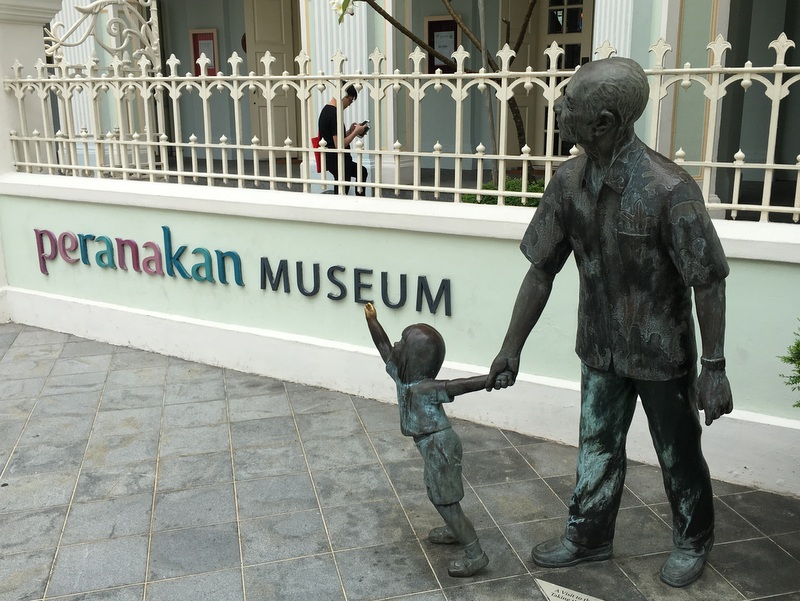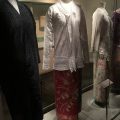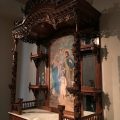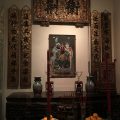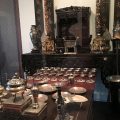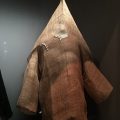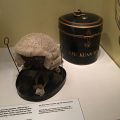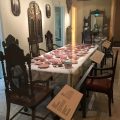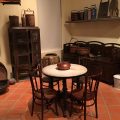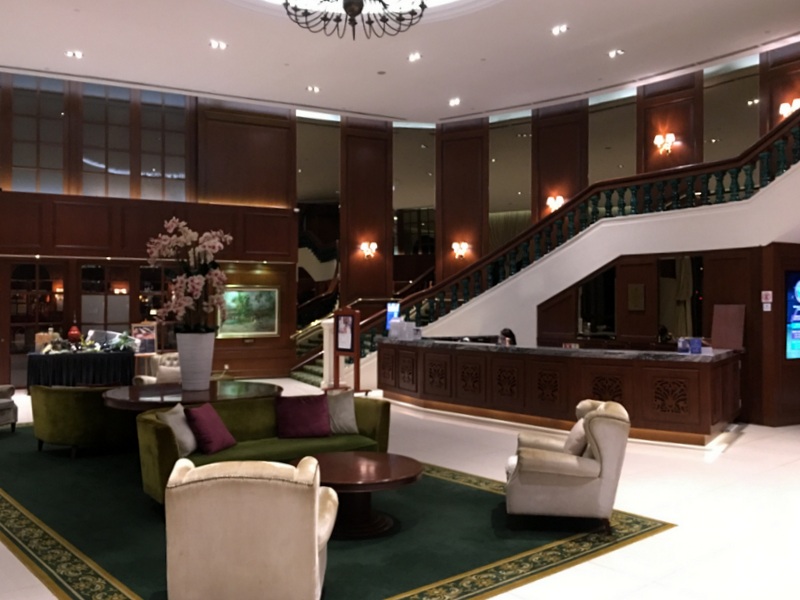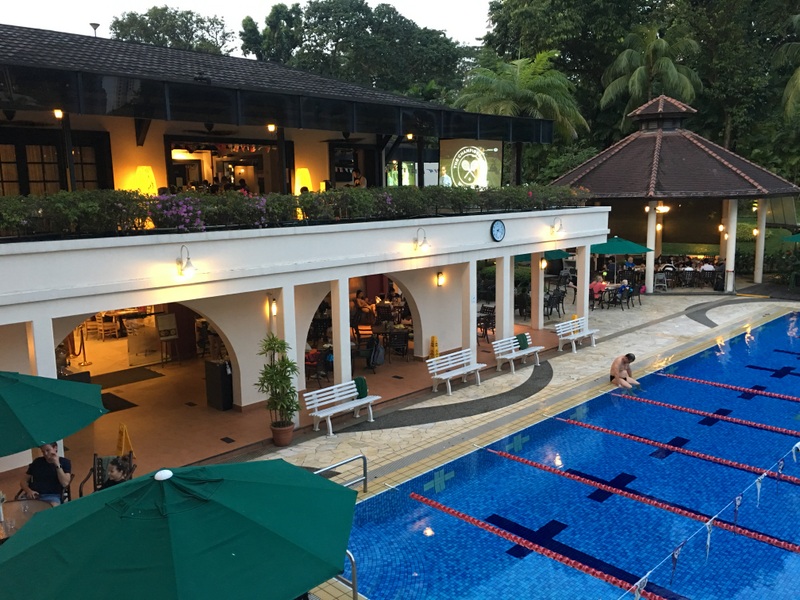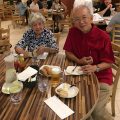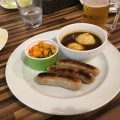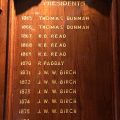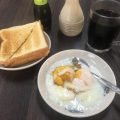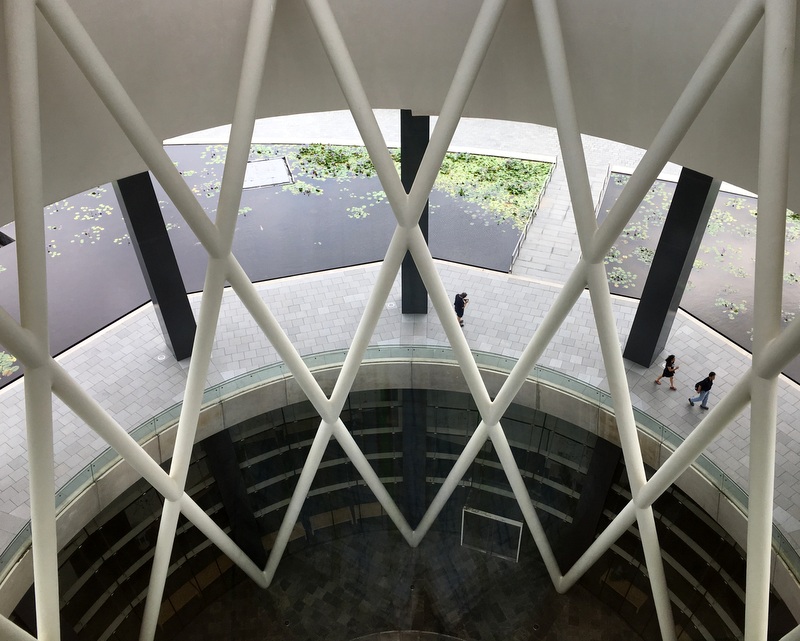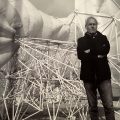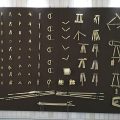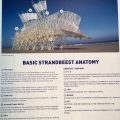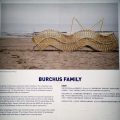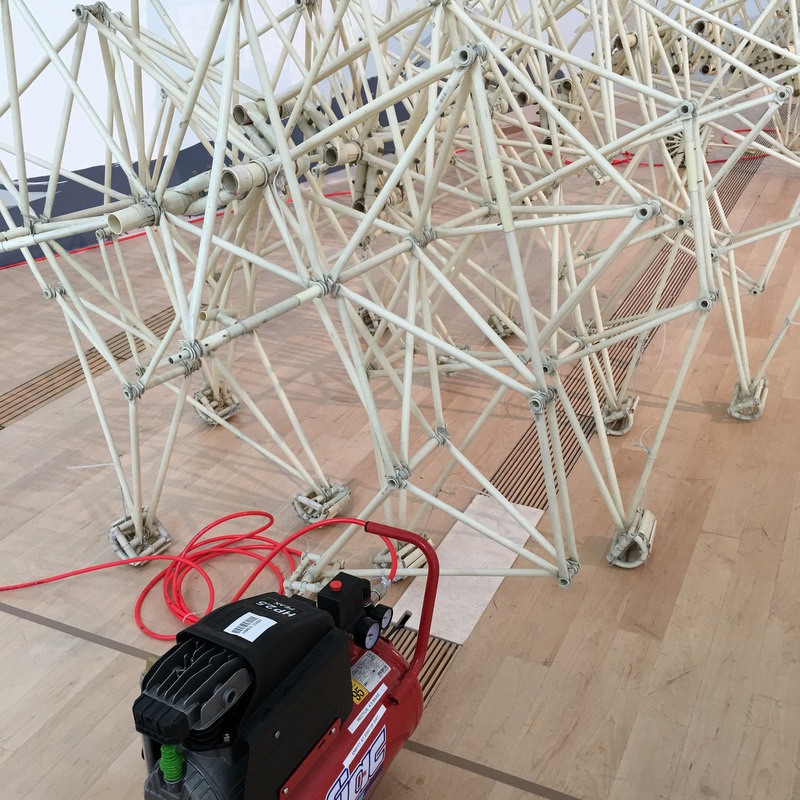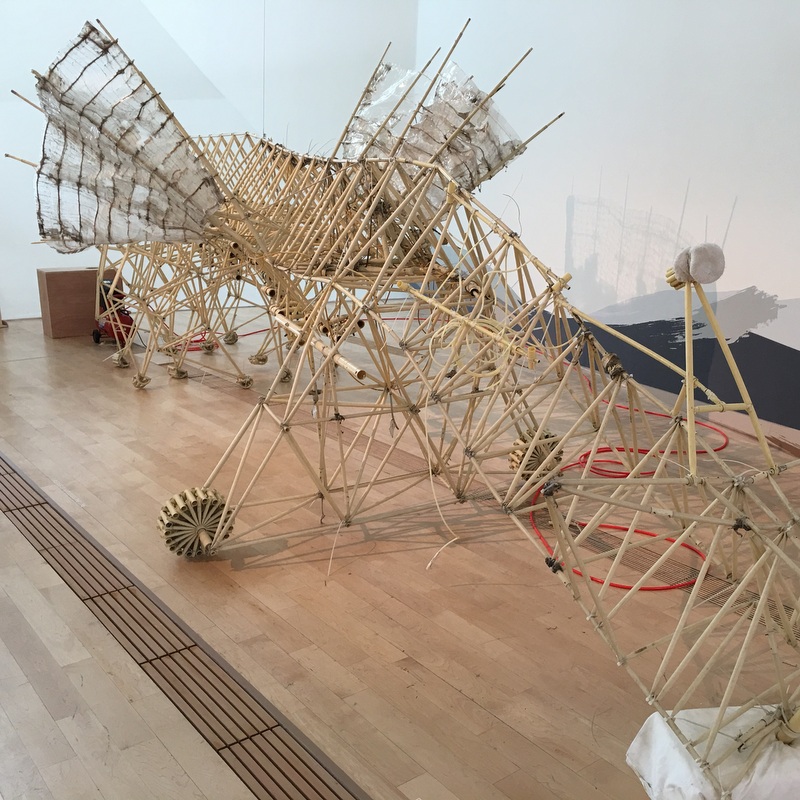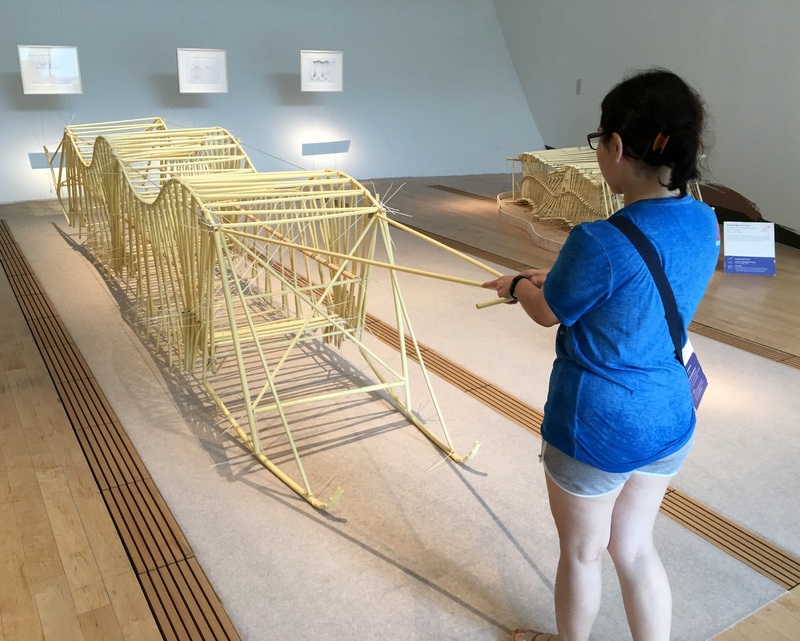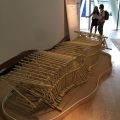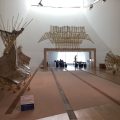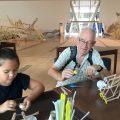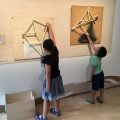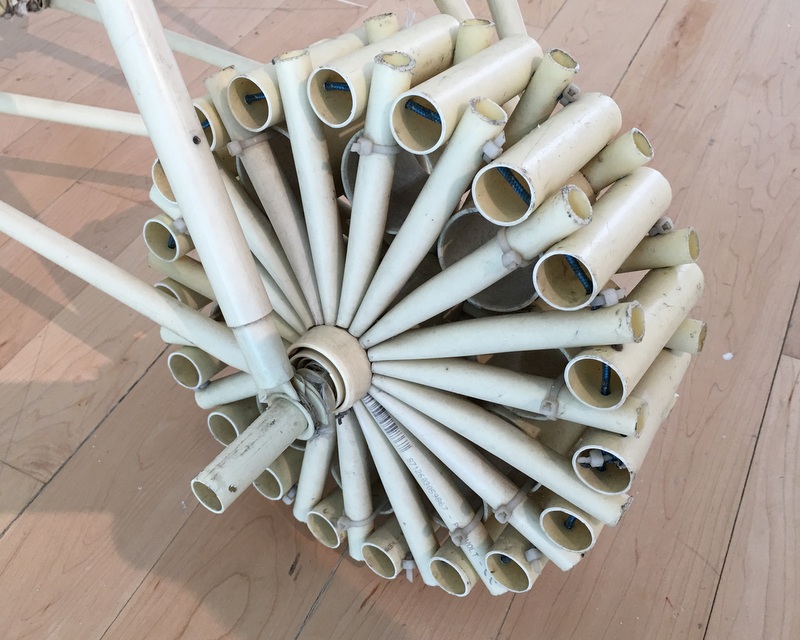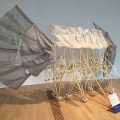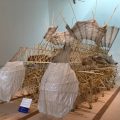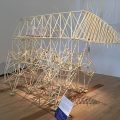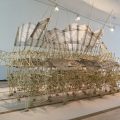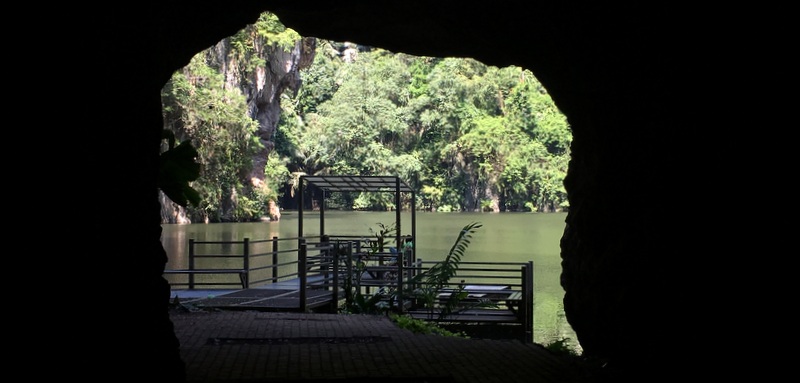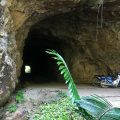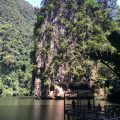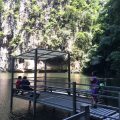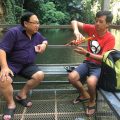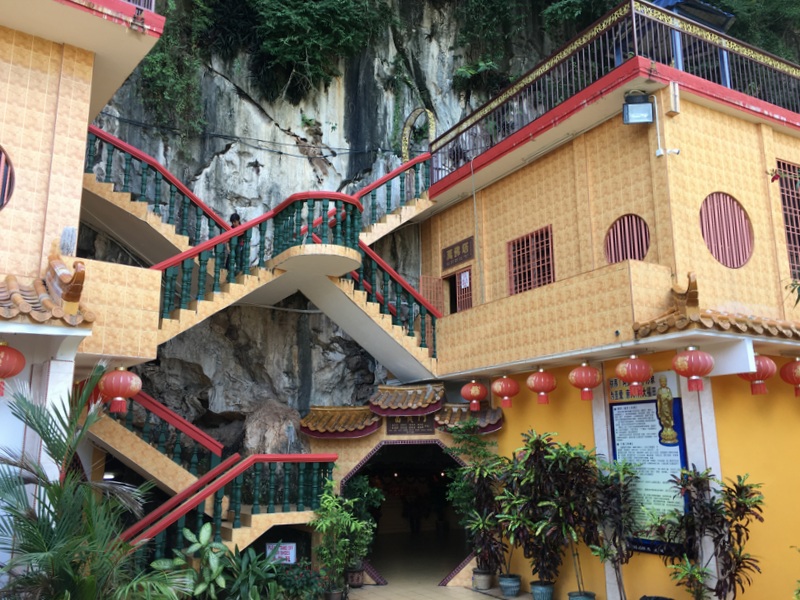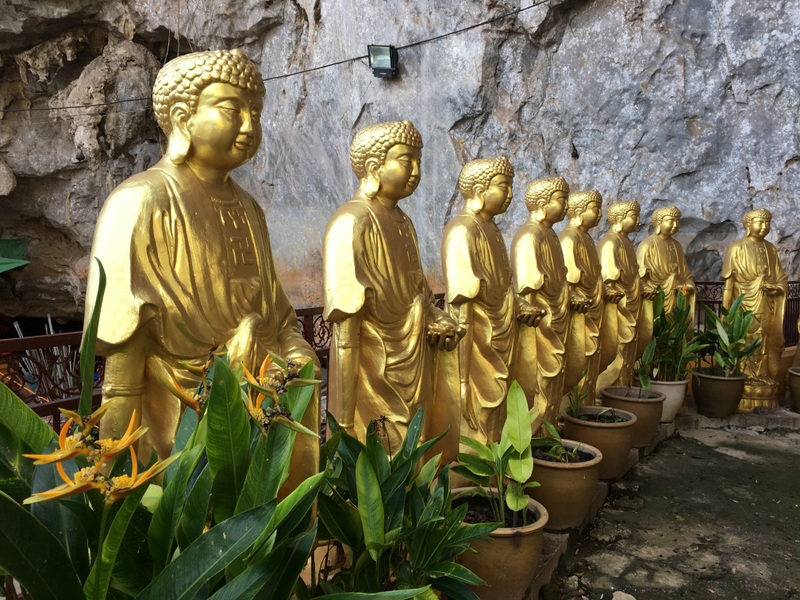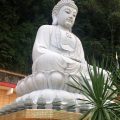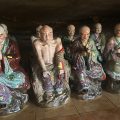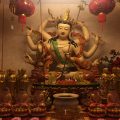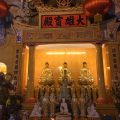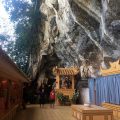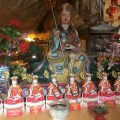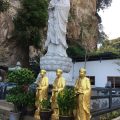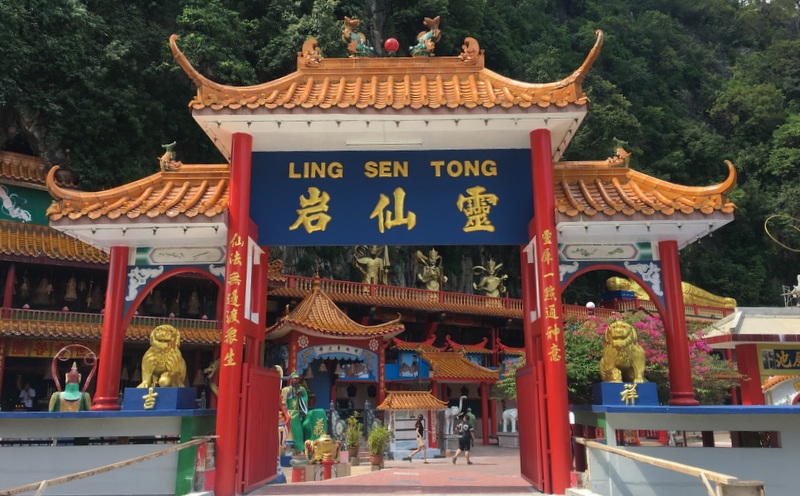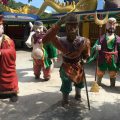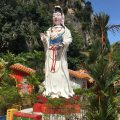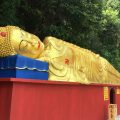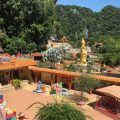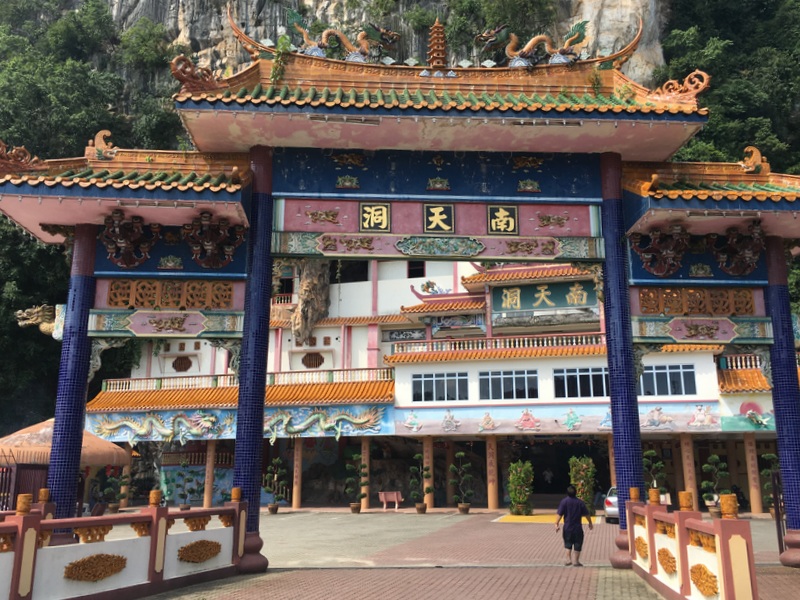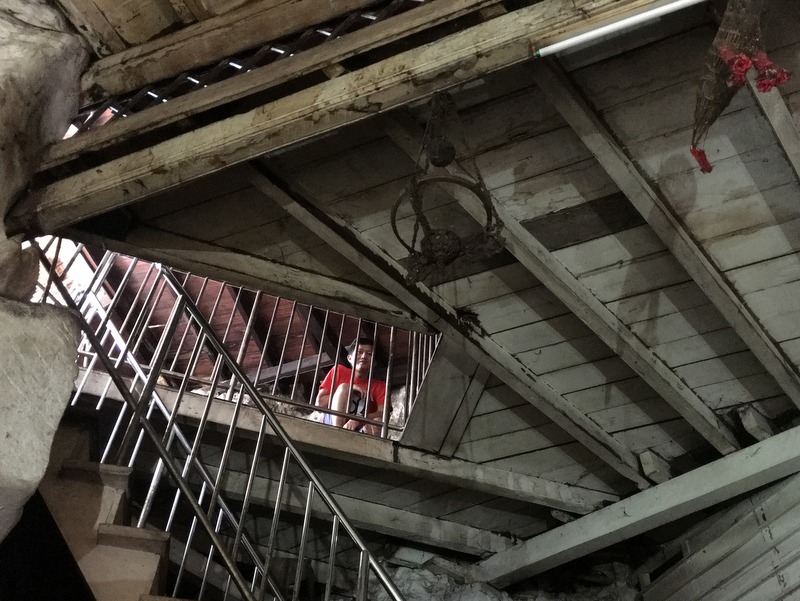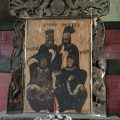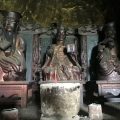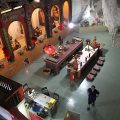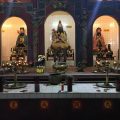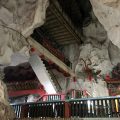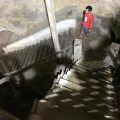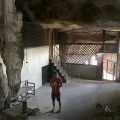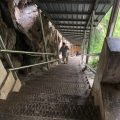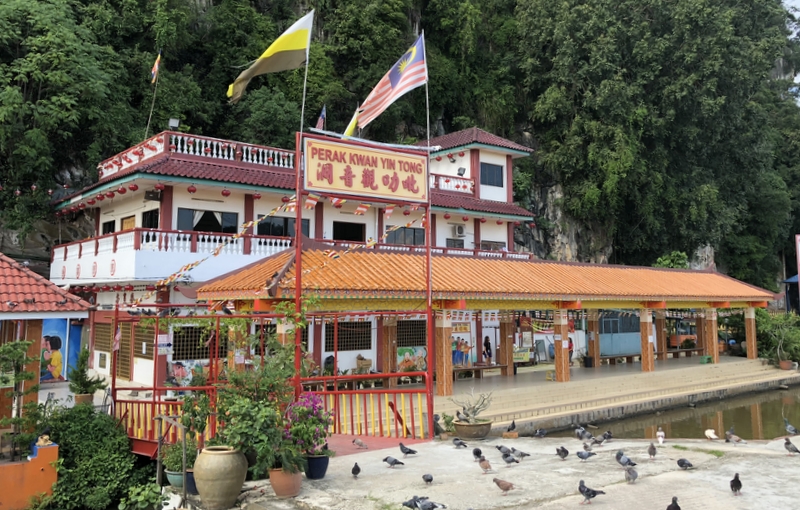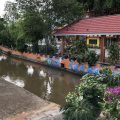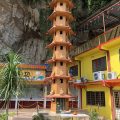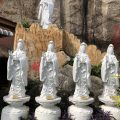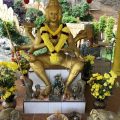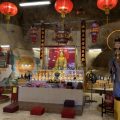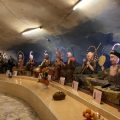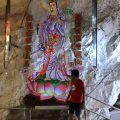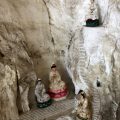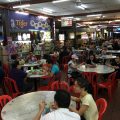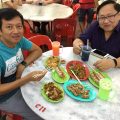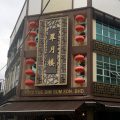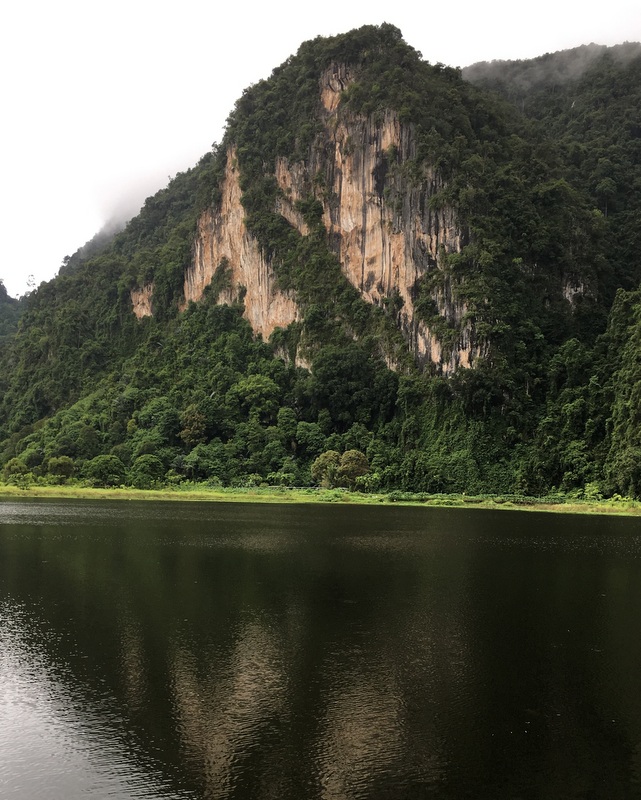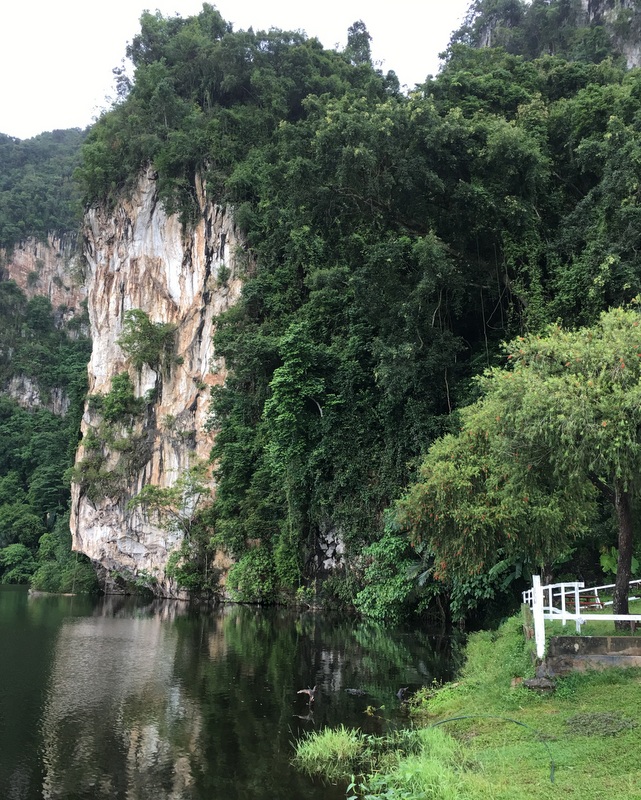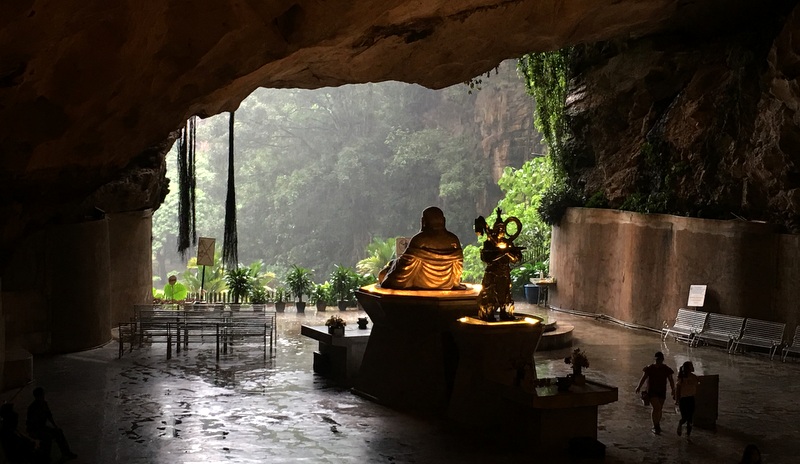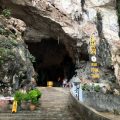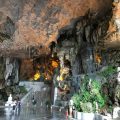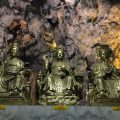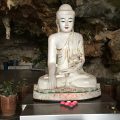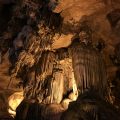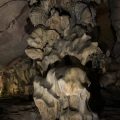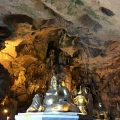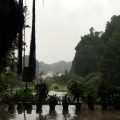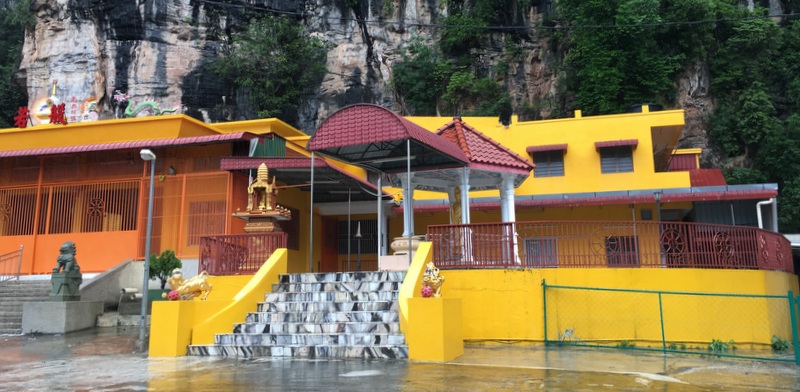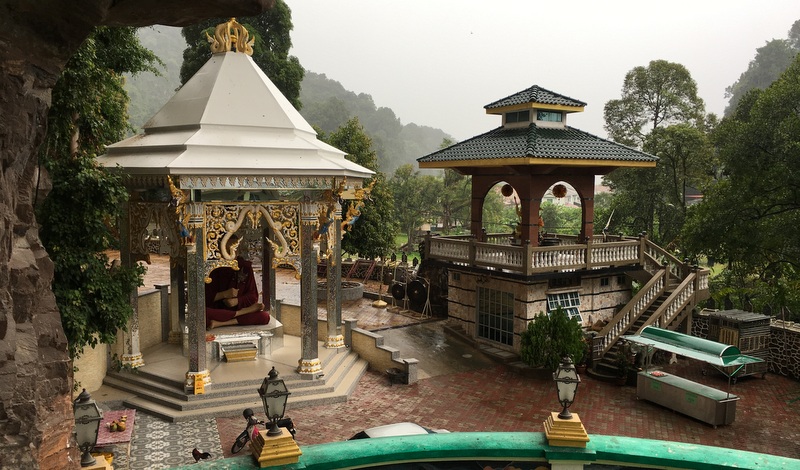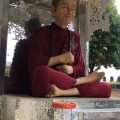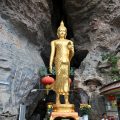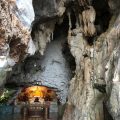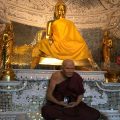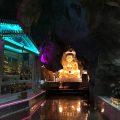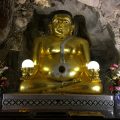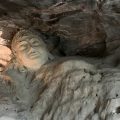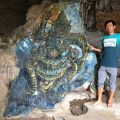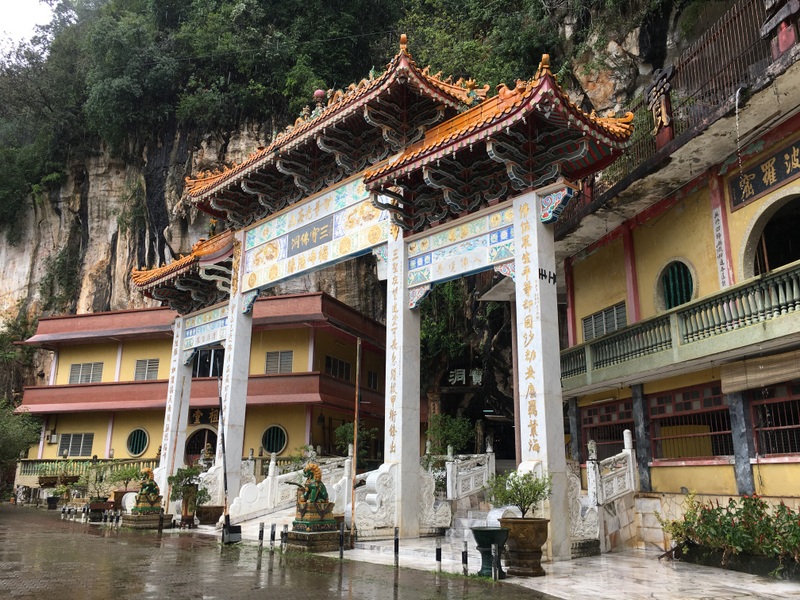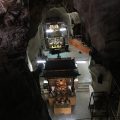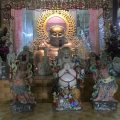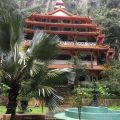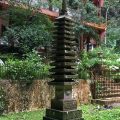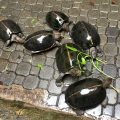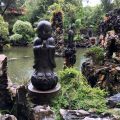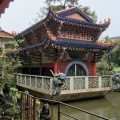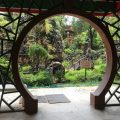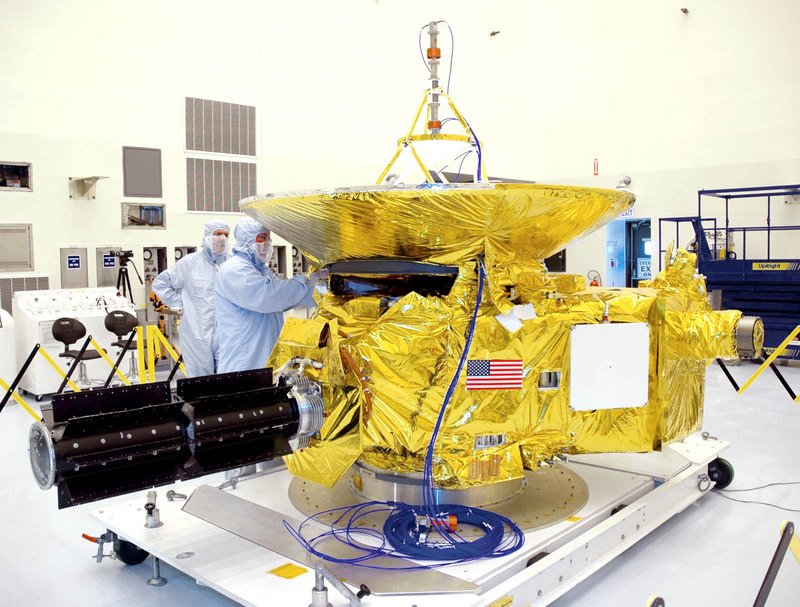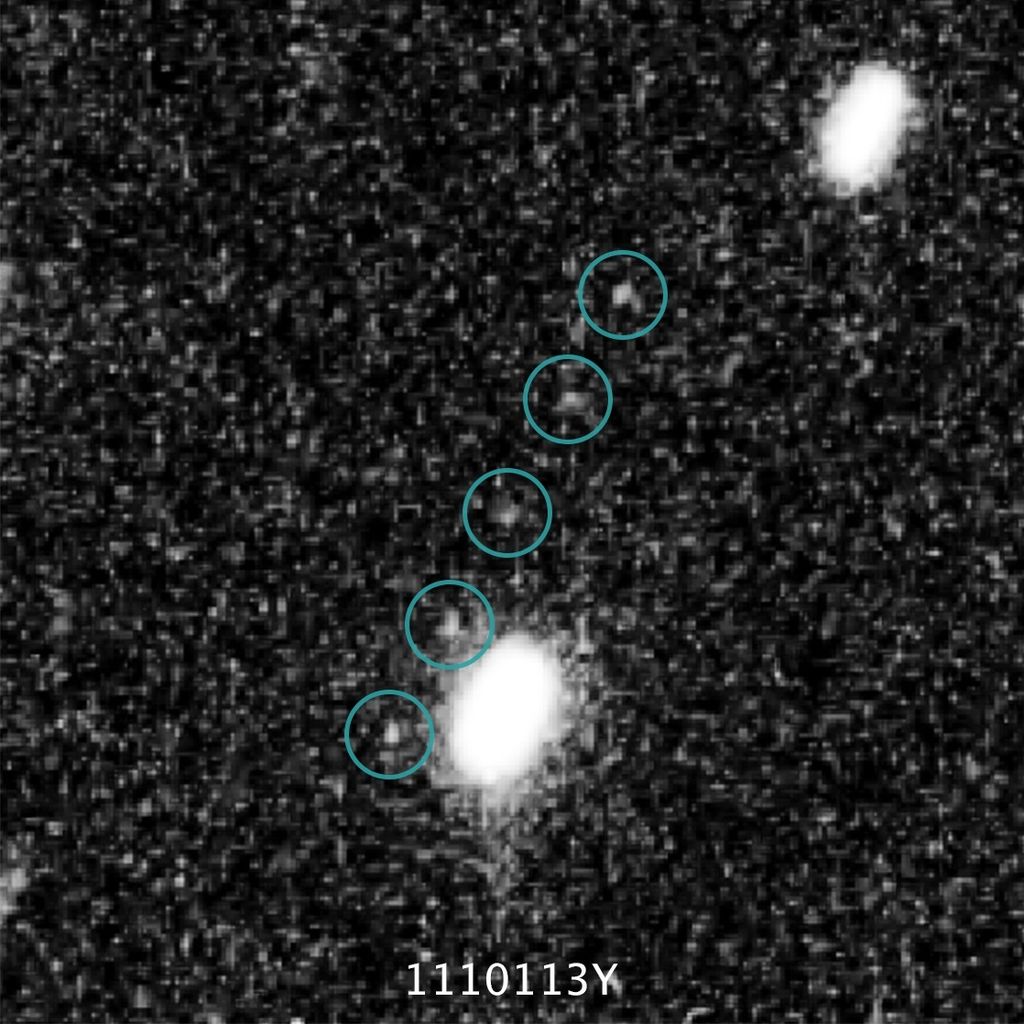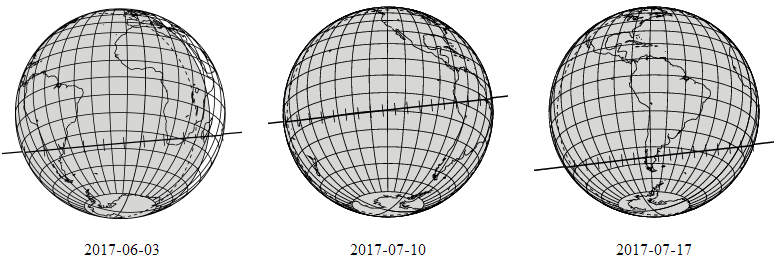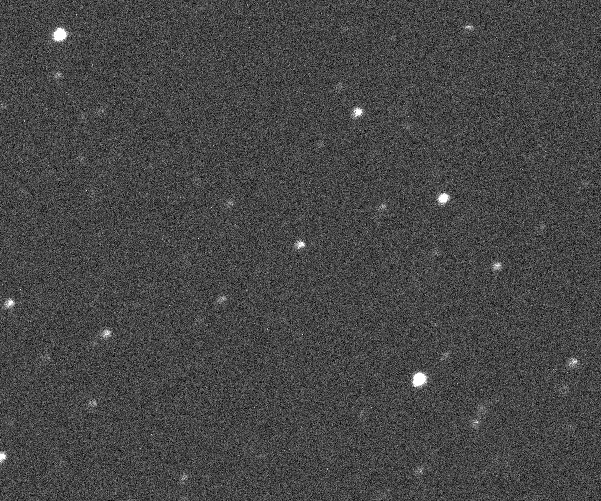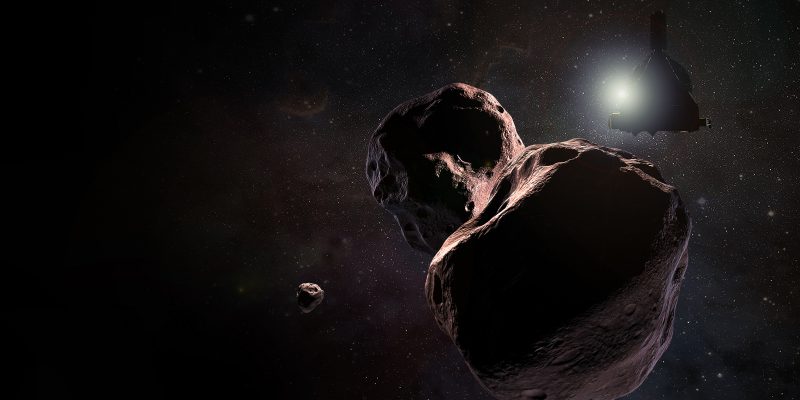After my visit of the Gunung Rapat Cave Temples, I drove to Taiping, my 2nd hometown…:-). I arrived just in time for a forum discussion organised by the Taiping Heritage Society.
When I checked in in my usual Furama hotel, the reception warned me that it might be noisy in the evening, because in kampung Peng Loong, near the hotel, a temple festival was going on, to celebrate the birthday of Datok Keramat Empat. These Datuk temples are very interesting, you can read more about them here.
And yes, it was noisy, but it stopped at midnight. I expected Chinese opera, but it was more disco style with a scantily dressed lady singer! The times they are a changing 🙂
There was a friendly atmosphere, with food and beer. And also people were praying..:-)
The next morning I went for breakfast to the stall of Mr Tong for my chee cheong fun (see my earlier Taiping reports). I asked him if I could come to his house that evening to watch him making the chee cheong fun. I was welcome.
I had another look at the Datok temple, now of course everything was quiet. The shrine is standing against a giant tree. Walking back to my hotel, I noticed an impressive old bungalow with the year on the facade, 1915. A friendly lady, living in the house showed me the name of the bungalow on one of the gate pillars: Spring Lodge
- Mr Tong’s CCF
- The shrine by daylight
- Nice old bungalow
- The name of the bungalow
THS had organised an excursion that morning to the Bukit Berapit train tunnels. These tunnels (there are four) are no longer in use after a new tunnel, three km long, has been excavated for the ETS train from KL to the Thai border. Bukit Berapit is a pass between Taiping and Kuala Kangsar, Isabella Bird passed here in 1879 on the back of an elephant..:-). From the no 1 trunk road, we followed a trail leading to the ruins of the former Bukit Berapit station.
From there we walked to the tunnel entrance. Until a few years ago the rails were still there, now they have disappeared, probably sold as scrap iron. The tunnel was dark, partly muddy and flooded. Great fun, although too much for some of the ladies..:-). See the captions of the images.
- Start of the hike
- There we go
- Bukit Berapit station
- Not much is left
- Following the railway tracks
- Entrance of the tunnel
- A few hundred meters long
- Follow me
- THe beginning is very muddy
- And the end is flooded
- The other end of the tunnel
- Young and old explorers..:-)
On our way back to Taiping we stopped at the tombs of Long Jaafar, the father of Ngah Ibrahim. Legend has it that he discovered tin in the region, after one of his elephants came back , his legs covered with tin mud. Long Jaafar had his fort here, now only the tombs remain
Nearby, in Bukit Gantang, we had lunch at a road stall, nice Malay assam laksa. It was a nice excursion, we visited only one tunnel, I would like to explore the other ones as well.
In the afternoon I met my friend May for tea, in the patisserie next door to the Boo Bee shop of Yeap. This attractive townhouse was owned by Kapitan Chung Keng Kooi (1829-1901).
The recent renovation of the left half of the house is well done, and it was quite busy with a young crowd. Hope it will be a success, the cempedak cake was nice.
After tea I walked to Tong’s house, quite near to my hotel. His wife and he were already busy preparing the chee cheong fun. Interesting old fashioned process. But very hot inside, after a while I escaped to the Lake Gardens.
It was a nice evening, the gardens were beautiful as usual, with many people enjoying the peaceful atmosphere. I walked around a bit, always like to have a look at one of my favourite trees , the cannonball tree. Probably many walkers are not aware that a few of these trees are growing in the lake gardens.
Since a few months MPT has closed part of the circular road for motorised traffic, it is now a pedestrian area, called the Raintree Walk. A good move of MPT. Less successful are the planters, placed along the Raintree Walk. Click on the right picture, to see how some of them are used…:-)
- Serene
- Cannonball tree
- Raintree Walk
- Planters provided by MPT
The next morning I went with two THS ladies to Aulong. Aulong is a “New Village” created around 1950 during the Emergency. Its purpose was to house squatters who were living near the fringes of the jungle, to isolate them from the CT’s, the communist guerrillas. Those new villages were fenced, with guarded gates.
I am interested in the experiences of people who lived in those new villages. One of the ladies had a classmate whose father had been living in Aulong since 1958, and we went to interview him..:-) It was a nice meeting, but not very informative, when he moved to Aulong it was already more or less a normal village.
The left picture shows a GE screenshot of Aulong. The arrow-like road pattern in the center could have been dating back to the creation of the village. The blue line is where in the past the first railway, from Port Weld to Taiping, was located. And north of Aulong you can see the former airport of Taiping.
- GE image of Aulong
- Moved to Aulong in 1958
- The interview
- Old shop in Aulong
As we were so close to the airfield,we decided to have a look. Big empty space, I wonder if there are plans to develop it. I have heard that the land is still owned by the Ministry of Defence.
- Former control tower
- Runway
- Now used for model planes
- Pilot in action..:-)
I had been really very busy after my arrival in Taiping, so I was looking forward to two relaxing days in the Nest, up Maxwell Hill!. The weather was nice, here is a view from the Nest to Gunung Bubu, about 65 km away.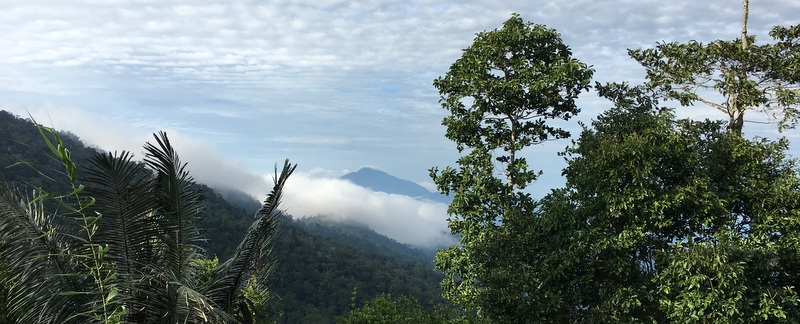
After the jeep has dropped you at Speedy’s bungalow, it is a short walk to the Nest, with each step you feel that you are moving into a different world, into the past…:-)
In earlier posts I have written already a lot about Suet Fun and Peter’s paradise, here a few pictures only. The food was delicious as usual, and the feeling to live in the past was stronger this time, as there was a problem with the electricity, so no hot shower…:-) Brrr, but refreshing.
What a difference with Speedy’s. Waiting for the jeep back to Taiping town, I had time to explore. Officially all doors were locked, but I have been living long enough in Malaysia to know that there is often a backdoor still open…:-)
- Speedy’s
- The livingroom
- People still stay overnight
- A bedroom?
Back in town, I stopped for a short while in the Taman Botani, the new mega project to create a botanical garden in Taiping. I must say, it looked nice, although I personally still think the money could have been spent better, for example in upgrading the Maxwell Hill bungalows.
- Peaceful
- New construction
- Modern toilet building
- Expecting large crowds
My last appointment before driving back to KL was with Dr Indraraja , who was going to show me the renovated building of the Ceylon Association. I was a bit early, so that gave me time to have a look at the buildings along Station road which for me represent the Shame of Taiping, Bandar Warisan.
The two buildings between the former First Galleria and the Rest House, can still be entered. But when I did that, a half-naked squatter started shouting at me, so I thought it safer to leave the place…:-)
The Rest House is slowly deteriorating. Click on the pictures and read the signboard, the tablet and the banner. MPT should at least remove all three. The last picture shows the “entrance” I used in the past to go inside. At least that entrance has been blocked.
- No comment
- No comment
- No comment
- At least locked now
Let me end this post in a positive way. The restoration of the Ceylon Association has been completed, and the result is pleasing. Here is a view of the backside.
And here are pictures of the front. Pity that the ground floor windows are modern, but Dr Indra explained that the window frames were beyond repair.
Here some pictures of the interior. The ceiling is nice, with the old fan. The first floor planks were very uneven and had to be covered with a kind of laminate. The interior is still empty, furniture etc had to be removed for the restoration.
- Nice old fan
- Stairs to the first floor
- First floor
- Backside
It was again a visit full of variety.

